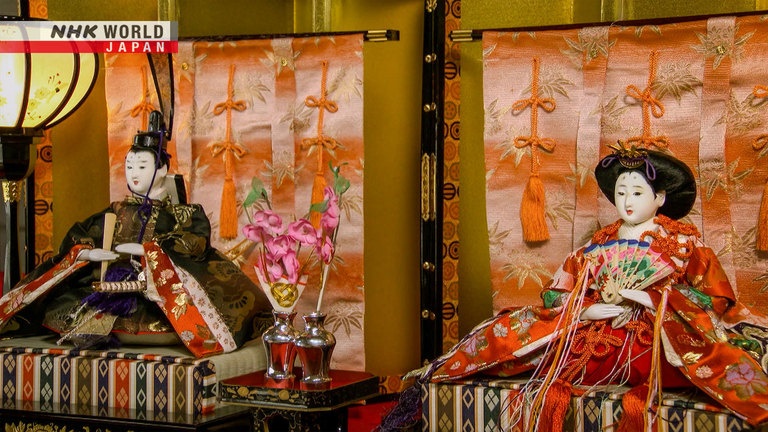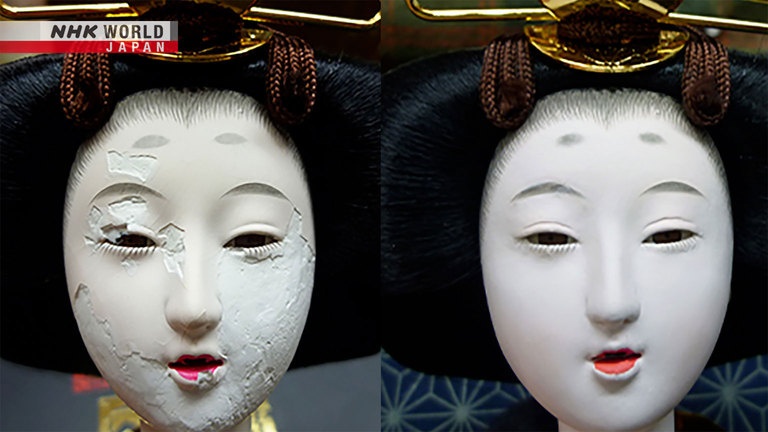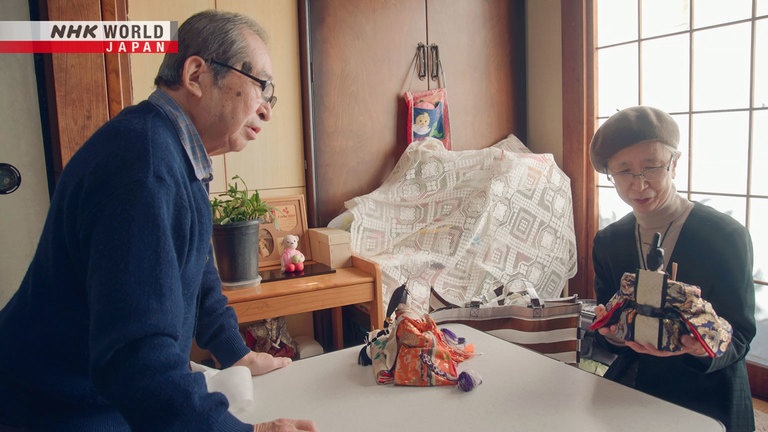Doll Revival
Artisan Matoba Kensho restores traditional dolls. Beyond cleaning, he repairs damage to faces. Well-cared-for dolls can last 100 years, so he hopes people bring them to him, and never discard them.




Transcript
Since ancient times, the Japanese have believed that a life force resides in all creations.
Valuing and caring for the things we use, a "Zero Waste Life."
Pointing the way to better living for a new era.
With dolls displayed for decades,
it's different.
I have to do all I can to restore them.
Dolls, long familiar to the people of Japan.
Displayed for seasonal festivals devoted to health and happiness for children,
they're collectively known as "festival dolls."
Konosu, Saitama, about 50 kilometers north of Tokyo.
This area is known as a leading producer of festival dolls.
Here, an artisan has been making dolls for over 70 years.
His name is Matoba Kensho.
His specialty is the manufacture of dolls' heads.
It's quite difficult.
You can't hurry.
Haste inevitably leads to error.
But Matoba does more than making dolls.
He has another very important vocation.
These are repair jobs, all quite old.
For the head, I fix any discoloration
and completely replace the hair.
Matoba takes in worn or broken dolls, repairs them, and returns them to their owners.
Just as I thought, you can see
the area around the eyes is missing.
But it has a really nice face.
If I do my job well, it should hold up
for another 50 or 60 years.
These are dolls he previously restored.
In the hands of a master, the results speak for themselves.
The doll he's working on now is around 90 years old.
There are chips missing around the eyes and mouth, the overall color has faded,
and the hair has come off completely.
With the chipped areas repaired, he starts the repainting.
To avoid any differences with the original color, the paint is applied little by little.
One more coat.
Now, on to the missing hair...
Threads of the same material used in the original are carefully reapplied.
If it's not the same, it won't look right.
They'll say the look is all wrong.
The badly worn doll, now restored to its former beauty.
Matoba was born into a family of dollmakers.
He first knew he would be an artisan at the age of 12.
It started with the death of my father.
I quickly realized I would inherit
the dollmaking business from him.
It didn't interest me at all back then.
It was a matter of earning a living.
After completing his training, at the age of 20 he became a full-fledged dollmaker.
Then, 30 years later, he reached a turning point.
Dolls with only slight damage discarded; scenes like this became more and more common.
There were many doll funerals.
It seemed wasteful to me.
It felt unfair to the dolls themselves
not to repair them.
The expertly crafted dolls should be able to outlive any human if properly repaired.
With this in mind, Matoba began both making and restoring dolls.
To date, he's restored over 500 dolls;
and he's never refused a request, no matter how bad the condition.
His wife Teruko assists in repairing decorations and dressing the dolls.
Everything, even the smallest detail,
he'll keep at it until he gets it right.
I couldn't do it myself.
It's amazing!
Today, a woman has come to Matoba's workshop.
Please show me the dolls.
Ogawa Hideko has brought her cherished dolls in for repairs.
- Pretty big.
- The face is in bad shape.
There's staining.
When not stored properly—with
humidity—this is what happens.
But we can fix it. Good as new.
- Thank you.
- Leave it to me.
The doll has staining all over its face, and the hair is also damaged.
Matoba gets to work right away.
He begins by scraping the discolored face.
It's exceedingly delicate work.
It's something important, so I'm careful
not to damage to the face.
That would be unforgivable.
Here, his expertise really shows.
This is the trickiest part.
The eyebrows can completely change the facial expression.
It looks kinder, don't you think?
Finally, husband and wife replace the hair ornaments, and dress the dolls together.
You do the headpiece.
- Is this side short?
- Yes, too short.
Okay, all finished.
A damaged doll, beautiful once again.
I hope they're well taken care of,
so they can last another 100 years.
After all, we cherish things of beauty.
I'm sure the dolls are pleased
with the results.
- Pardon me.
- Thank you for coming.
Ogawa has come to collect her dolls.
Here they are.
So beautiful! Lovely.
Thank you so much!
We also completely redid the hair.
His skill brought them back to life.
I was so worried about how worn
her face had become.
It may sound strange to say it,
but now they're better than new.
I'm so happy they look their best again.
The faces are such beautiful things.
Everyone who brings them to me
has special memories of their beauty.
In recognition of those feelings,
I do all I can to repair them.